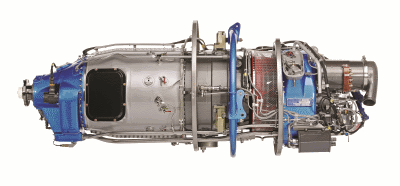Wed, Aug 18, 2021
AD 2021-15-10 Prompted By Several Reports Of Engine Gas Generator Speed (Ng) Rollbacks
The FAA is adopting a new airworthiness directive (AD) for all GE Aviation Czech s.r.o. (GEAC) H75-200, H80-100, and H80-200 model turboprop engines.

This AD was prompted by several reports of engine gas generator speed (Ng) rollbacks occurring below idle on GEAC H75-200, H80-100, and H80-200 model turboprop engines. This AD requires an inspection of a certain part number (P/N) fuel control unit (FCU) and, if deficiencies are detected, replacement of the FCU with a part eligible for installation. The FAA is issuing this AD to address the unsafe condition on these products. This AD is effective September 21, 2021.
Supplementary Information: The FAA issued a notice of proposed rulemaking (NPRM) to amend 14 CFR part 39 by adding an AD that would apply to all GEAC H75-200, H80-100, and H80-200 model turboprop engines. The NPRM published in the Federal Register on April 20, 2021 (86 FR 20465). The NPRM was prompted by several reports of engine gas generator speed (Ng) rollbacks occurring below idle on GEAC H75-200, H80-100, and H80-200 model turboprop engines. The NPRM proposed to require an inspection of a certain P/N FCU and, if deficiencies are detected, replacement of the FCU with a part eligible for installation. The FAA is issuing this AD to address the unsafe condition on these products.
The European Union Aviation Safety Agency (EASA), which is the Technical Agent for the Member States of the European Community, has issued EASA AD 2020-0082, dated April 1, 2020 (referred to after this as “the MCAI”), to address the unsafe condition on these products.
The MCAI states:
- Several occurrences have been reported of engine gas generator speed (Ng) rollbacks below idle on engines equipped with an affected part.
- The investigation determined that, during these events, the engine control lever (ECL) was set to idle, and identified as contributing factors specific environmental temperatures, possibly in combination with a high power off-take. The idle setting may be used in flight, in particular during the approach phase.
- This condition, if not detected and corrected, may lead to loss of engine power and eventually, on a single engine aeroplane, possibly result in loss of control.
- To address this potential unsafe condition, GEAC issued the ASB providing applicable instructions.
You may obtain further information by examining the MCAI in the AD docket at https://www.regulations.gov by searching for and locating Docket No. FAA-2021-0316.
More News
Pilot Applied Full Aft Stick And Nose-Up Trim, But The Airplane Remained On The Runway Analysis: The pilot reported that a preflight inspection and flight control checks revealed n>[...]
A Few Questions AND Answers To Help You Get MORE Out of ANN! 1) I forgot my password. How do I find it? 1) Easy... click here and give us your e-mail address--we'll send it to you >[...]
From 2022 (YouTube Edition): Before They’re All Gone... Humankind has been messing about in airplanes for almost 120-years. In that time, thousands of aircraft representing i>[...]
Advanced Air Mobility (AAM) A transportation system that transports people and property by air between two points in the NAS using aircraft with advanced technologies, including el>[...]
Aero Linx: MQ-1B Predator The MQ-1B Predator is an armed, multi-mission, medium-altitude, long-endurance remotely piloted aircraft that is employed primarily as an intelligence-col>[...]
 NTSB Final Report: Douglas A-4K
NTSB Final Report: Douglas A-4K ANN FAQ: Q&A 101
ANN FAQ: Q&A 101 Classic Aero-TV: PBY Catalina--From Wartime to Double Sunrise to the Long Sunset
Classic Aero-TV: PBY Catalina--From Wartime to Double Sunrise to the Long Sunset ANN's Daily Aero-Term (07.01.25): Advanced Air Mobility (AAM)
ANN's Daily Aero-Term (07.01.25): Advanced Air Mobility (AAM) ANN's Daily Aero-Linx (07.01.25)
ANN's Daily Aero-Linx (07.01.25)



